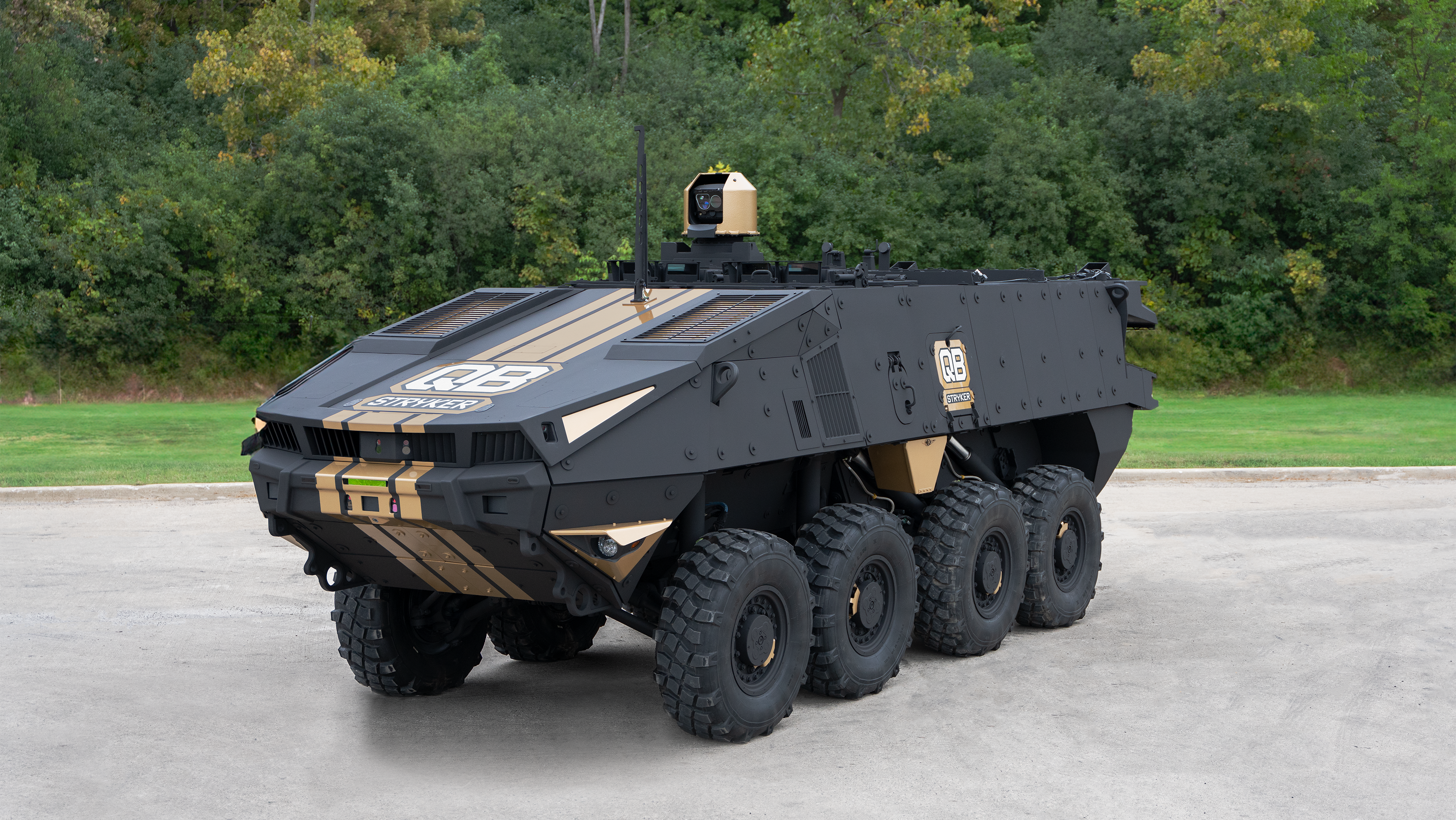ASHLEY ROQUE

AUSA 2023 — Contending with a much more lethal defensive line than any NFL team, General Dynamics Land Systems’ new tech demonstrator seeks to turn an eight-wheeled Stryker armored fighting vehicle into the quarterback star of land combat with robots as its teammates.
“The United States Army has got a lot of soldiers that love American football and so we said, ‘What’s in a name?’ A quarterback of the battlefield is what we’re trying to portray or visualize,” Scott Taylor, the company’s director of US business development, told Breaking Defense in an Oct. 2 interview.
GDLS plans to display several vehicles on the Association of the United States Army conference floor this year, including its new manned StrykerQB that the company says is designed to show service leaders the “art of the possible” when it comes to using existing platforms for manned-unmanned teaming, or human-machine integration.
But instead of having one manned vehicle either leading the way or operating just a couple ground or aerial robots, the StrykerQB is configured to hold six soldiers — two operating the vehicle, one as the mission commander and three operating multiple robots at a “hub” in the back of the vehicle. So far, the company has used that tech demonstrator to control two unmanned ground vehicles and three unmanned aerial systems.
“The Army has been doing a lot of work in past years using legacy vehicles, and is trying to jam in the back of these vehicles … [with] a capability to control robots and so far, it’s been sort of on a one-to-one [or] one-vehicle-to-two robots,” he added. “We believe with investment in our next-gen electronic architecture, as well as the substantially improved power and space capabilities of the StrykerQB, that we can create multi-robotic control.”
Although GSLS showed off a similar looking Stryker X at last year’s show, they are billing the QB as a maturation of sorts over this earlier tech demonstrator, with “substantially improved” electronic architecture, artificial intelligence and a Safran sight.
“It can see great distances as well as substantially improved display screens and controllers that allow you to control more than just one robot at a time,” Taylor said.
Although the Common Remotely Operated Weapon Station-Javelin and troop seats in the back of the vehicle have been removed, the StrykerQB remains a hybrid-electric vehicle and includes a modular open system architecture for any active protection system the Army wants integrated.
Funded via an internal investment, Taylor said the company isn’t eyeing one specific Army requirement right now, but the team is hoping for it to be involved in upcoming service experiments in the 2024 and 2025 timeframe focused on human-machine integration.
“We do not have specific events in mind at this time, but as we continue to mature the technology of the StrykerQB and pair it with our [Tracked Robot 10-ton] TRX and [Small Multipurpose Equipment Transport] S-MET, we hope to learn more,” Taylor said.
“They’re learning how to do this human-machine integration, we think we can learn together and provide a very compelling capability,” he added.
In the meantime, the service is continuing on its quest to prepare for the future battlefield with Army Futures Command head Gen. James Rainey eyeing ways to better integrate humans and machines.
Some work, to date, has been with larger trucks including through the Expedient Leader Follower (ExLF) operational test demonstration that is now winding down. However, the Army is exploring other pathways forward in that arena including through a Ground Expeditionary Autonomy Retrofit Systems, or GEARS, run through the Defense Innovation Unit.
No comments:
Post a Comment